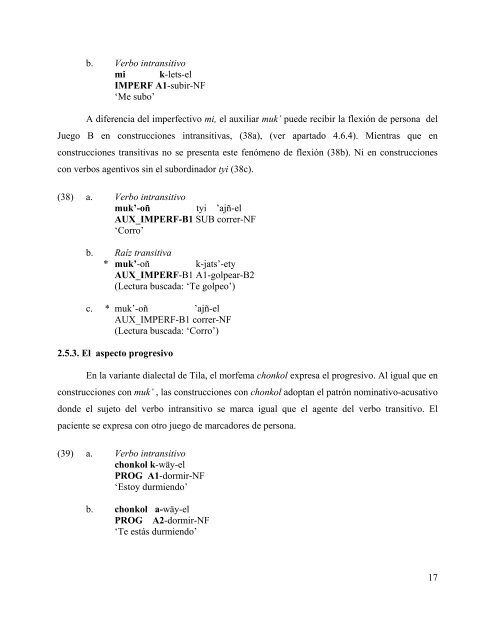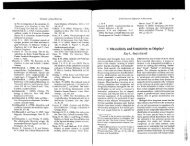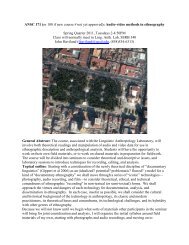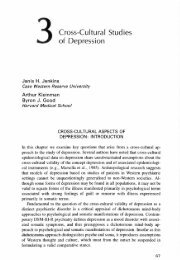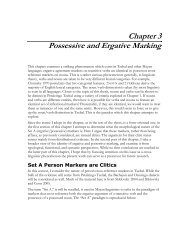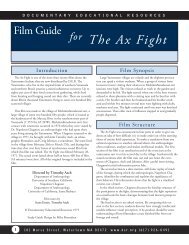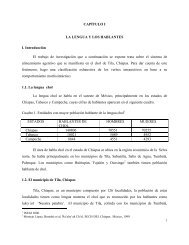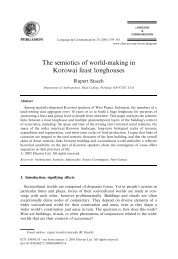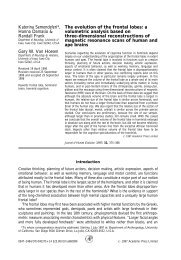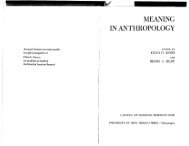III RASGOS GENERALES DEL PREDICADO CHOL
III RASGOS GENERALES DEL PREDICADO CHOL
III RASGOS GENERALES DEL PREDICADO CHOL
You also want an ePaper? Increase the reach of your titles
YUMPU automatically turns print PDFs into web optimized ePapers that Google loves.
. Verbo intransitivo<br />
mi k-lets-el<br />
IMPERF A1-subir-NF<br />
‘Me subo’<br />
A diferencia del imperfectivo mi, el auxiliar muk’ puede recibir la flexión de persona del<br />
Juego B en construcciones intransitivas, (38a), (ver apartado 4.6.4). Mientras que en<br />
construcciones transitivas no se presenta este fenómeno de flexión (38b). Ni en construcciones<br />
con verbos agentivos sin el subordinador tyi (38c).<br />
(38) a. Verbo intransitivo<br />
muk’-oñ tyi ’ajñ-el<br />
AUX_IMPERF-B1 SUB correr-NF<br />
‘Corro’<br />
b. Raíz transitiva<br />
* muk’-oñ k-jats’-ety<br />
AUX_IMPERF-B1 A1-golpear-B2<br />
(Lectura buscada: ‘Te golpeo’)<br />
c. * muk’-oñ ’ajñ-el<br />
AUX_IMPERF-B1 correr-NF<br />
(Lectura buscada: ‘Corro’)<br />
2.5.3. El aspecto progresivo<br />
En la variante dialectal de Tila, el morfema chonkol expresa el progresivo. Al igual que en<br />
construcciones con muk’ , las construcciones con chonkol adoptan el patrón nominativo-acusativo<br />
donde el sujeto del verbo intransitivo se marca igual que el agente del verbo transitivo. El<br />
paciente se expresa con otro juego de marcadores de persona.<br />
(39) a. Verbo intransitivo<br />
chonkol k-wäy-el<br />
PROG A1-dormir-NF<br />
‘Estoy durmiendo’<br />
b. chonkol a-wäy-el<br />
PROG A2-dormir-NF<br />
‘Te estás durmiendo’<br />
17


